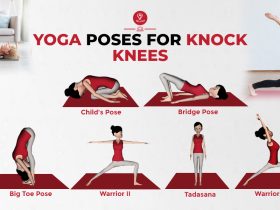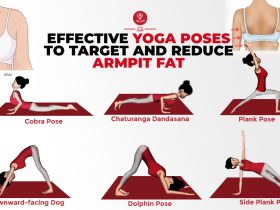
As the name suggests Wide-Angle Seated Forward Bend (Upavistha Konasana) is an intense leg stretching Yoga posture, is ideal for most of the seated forward bends, twists, and the wide-leg standing poses.
It’s a foundational seated forward bend pose, performed sitting by opening the legs wide followed by leaning forward. It’s practiced in the primary series of Ashtanga Yoga poses. It gives you the benefit of an intense stretch of the upper and lower body, as well as encouraging a sense of calm in the body.
Upavistha Konasana Meaning
The Sanskrit word Upavistha Konasana has a wonderful meaning. In which Upavistha means sitting, seated, and Kona stands for Angle and Asana means yoga posture. It is translated in English as Wide-Angle Seated Forward Bend.
It clarifies the asans is forward bending with leg stretching, is used in many seated bend and twists related asana.
As it is seen in the introduction of asana when you forward bend opens the entire back of your body as well as gently squeezing and massaging the abdominal organs.
Practice Guide to Perform Upavistha Konasana (Wide-Angle Seated Forward Bend)
It proceeds to break down the pose into manageable components, providing detailed instructions on body positioning, alignment, and breathing techniques essential for executing Wide-Angle Seated Forward Bend correctly. Illustrations or images may accompany the instructions, aiding practitioners in understanding the nuances of each step.
Preparatory Yoga Poses
How to do Upavistha Konasana
Starting Position: Begin by Staff Pose (Dandasana), sitting on the floor with the legs outstretched in front of you and back straight.
Open Legs: Open your legs as wide as comfortably possible, keeping your toes pointing up toward the ceiling. Flex your feet to engage your leg muscles. (In this position if you can’t sit comfortably, use a folded blanket under the buttocks.)
Alignment: Ensure your pelvis is grounded and your sitting bones are pressing into the floor.
Spine Straightening: Lengthen your spine by lifting through the crown of your head and rolling your shoulders back.
Hinging at Hips: Engage your core muscles and as you exhale, slowly begin to bend forward at the hips toward the middle of your legs. As you bend, spread the hips wider if possible. Keep your spine long as you bend forward.
Reach Forward: Extend your arms forward between your legs, reaching toward the floor in front of you between your legs. You can place your hands on the floor beside your legs for support or hold your feet if you can reach comfortably.
Maintain Alignment: Ensure that your back remains straight; avoid rounding the spine excessively.
Breathe: Relax into the pose and focus on your breath. Take slow, deep breaths, allowing yourself to sink deeper into the stretch with each exhale.
Hold: Hold the position for 30 seconds to a minute, or longer if comfortable.
Release: To come out of the pose, engage your core muscles and inhale as you slowly lift your torso back up to a seated position.
Duration: Aim to perform the cycling motion for about 1-2 minutes initially, gradually extending the duration as your strength and stamina improve.
Beginner’s Tip
Upavistha Konasana is a difficult posture for beginners. If there is a problem bending slightly forward then take a thickly rolled blanket for it and keep it on the floor in front of you. If you have more trouble then you can turn the knees a bit. Yet, it is important that the knee cap continues to point to the ceiling.
Follow-up Yoga Poses
Precautions & Contraindications
- Remember, always to listen to your body and not force yourself into any uncomfortable or painful positions. This stretch can be challenging, especially if you’re not used to it, so take it slow and gradually work on increasing your flexibility over time.
- If you suffer from lower-back injury, Sit up high on a folded blanket and keep the torso upright.
- Don’t perform in the problems related to hamstrings or groin.
- In the case of pregnancy must avoid this.
- During practice, if you find any pain or discomfort, please exit the pose and ask for the expert’s guidance and doctor’s advice.
Benefits of Upavistha Konasana
Lower Body Stretching: It offers an excellent stretch to the hamstrings, inner thighs, and groins, promoting flexibility in these areas.
Hip Opening: By opening the hips, this pose can help alleviate tension in the hip flexors and improve overall hip mobility.
Shoulder and Chest Expansion: The forward bend in this pose also engages the shoulders and chest, providing a gentle stretch and helping to open and expand these areas.
Tones abdominal organs: The forward fold in this pose provides a subtle massage to the abdominal organs. This can potentially stimulate the digestive system, aiding in digestion and potentially relieving minor digestive discomfort.
Enhanced Flexibility and Strength: By regularly practicing this pose, individuals can experience improved flexibility in the lower body and increased strength in the spine, core, and leg muscles.
Relieves sciatica: The pose stretches the spine, lower back, and adductors, these stretches provide relieving actions on severe back pain. It even cures sciatica.
Conclusion
Upavistha Konasana, also known as Wide-Angle Seated Forward Bend, is a fantastic yoga pose with a wide array of benefits. Its impact on the body is comprehensive, targeting various muscle groups and enhancing both flexibility and strength.
RELATED ARTICLES
May 20, 2025
Kegel Exercises: Strengthen Your Pelvic Floor for Better Health
Kegel exercises strengthen the pelvic floor muscles, which support the uterus, bladder, small intestine and rectum. Strengthening these muscles improves[...]
Oct 06, 2024
Balance Your Body: Yoga Poses For Knock Knees (Genu Valgum)
Knock knees, or “genu valgum,” is a condition in which the knees touch each other while the ankles remain apart.[...]
Sep 20, 2024
Effective Yoga Poses to Target and Reduce Armpit Fat
Fat accumulation under the arms is a common problem for many women, which is often considered an important part of[...]
RECENT POSTS
Disclaimer
The content is purely informative and educational in nature and should not be construed as medical advice. Please use the content only in consultation with an appropriate certified medical or healthcare professional






